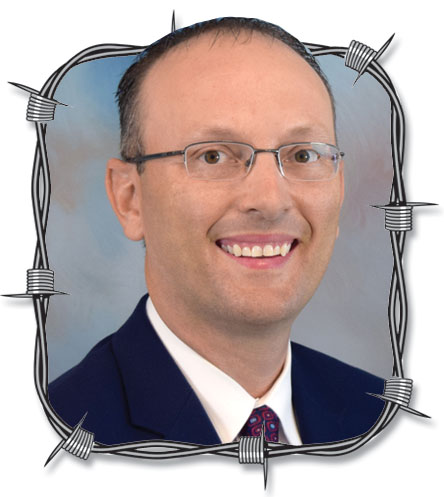
As I sit here this morning with the news of the Prime Rate increasing once again, I feel as though this would be a good time to discuss the elephant in the room, rates, and the costs of borrowing money.
This reminds me of all of the conversations we have been having lately with our customers when it comes to what their rates are currently, where we think they are going to be, and in some situations keeping customers from having a knee jerk reaction when it comes to rates on agricultural and commercial loans as well as home construction and mortgage loans. With rates being exceptionally low for an extended period over the last few years, there are some customers that have never dealt with this sort of rate increase.
Rates and loan costs obviously influence the overall outcome of customers borrowing money for the future success of their family farm business. As difficult as 2022 has been to watch the Prime Rate increase so rapidly, it is important to note just what this rate has done historically and point out that our current rates are still reasonably priced.
The Prime Rate is used by commercial banks as a basis for the interest they charge customers for their loans including consumer, commercial, agricultural, and home loans. Data on the JP Morgan Chase website has a chart that tracks the Prime Rate back to 1983. To put things in perspective, the Prime Rate was 13.00 percent in 1984. I remember when my parents built a new home in 1989 and their construction loan rate was 12.00 percent. Obviously that rate is hard to understand now, but at the time that was just the going rate.
When I started in banking in late April 2001, Prime had been as high as 9.00 percent in January 2001, however that year it had 10 decreases in a row and dropped to 4.75 percent by December 2001. That was a volatile year with rates decreasing in favor of our borrowers, however most folks saw their rates on deposits dropping as well. By 2006, Prime had increased all the way back to 8.25 percent. From 2007 to 2015, Prime had 10 consecutive decreases and made it to, at the time, an all-time low of 3.50 percent. In the last 7 years, Prime has never been higher than 5.50 percent with many increases and decreases during this time.
I mention this history, not to scare folks with the high end of the spectrum, but more to educate borrowers on where we have been and to appreciate where we are. The current Prime Rate of 5.50 percent obviously seems high at this very moment as we have been spoiled with low rates over the last number of years (i.e., 3.25 percent Prime Rate in early 2020) but by looking at the overall landscape, the current rate is still moderately priced. Now, none of us have a crystal ball to gaze into to know what things will look like by the end of year and especially not in the next three to five years. All we know is that we have experienced rising rate environments before and will see increases and decreases in loan rates going forward.
A longtime friend of mine and now coworker, Gregg Bailey, and I were fortunate enough in the last year to take part in some radio interviews. We discussed the impact that rates, operating costs, and revenues have on the family farm business. We always came back to the importance of having a great relationship with our borrowers and vice versa.
With the volatile raising rate market we are in, there is no more momentous time than right now to make sure those banking relationships are strong. Every year we request updated financial statements and income information. I know folks feel as though we are always asking for this information, however this is so vitally important to have current information at our fingertips so we can spot any potential concerns before it is a problem for our customers and as well as the bank.
Staying on top of our customers’ financial information and their operations will greatly improve the success of the banking relationship between both parties and will help to maintain a successful farm business.
Jason A. Whitesell is the vice president/commercial banking officer of Guaranty Bank. He can be reached at [email protected]